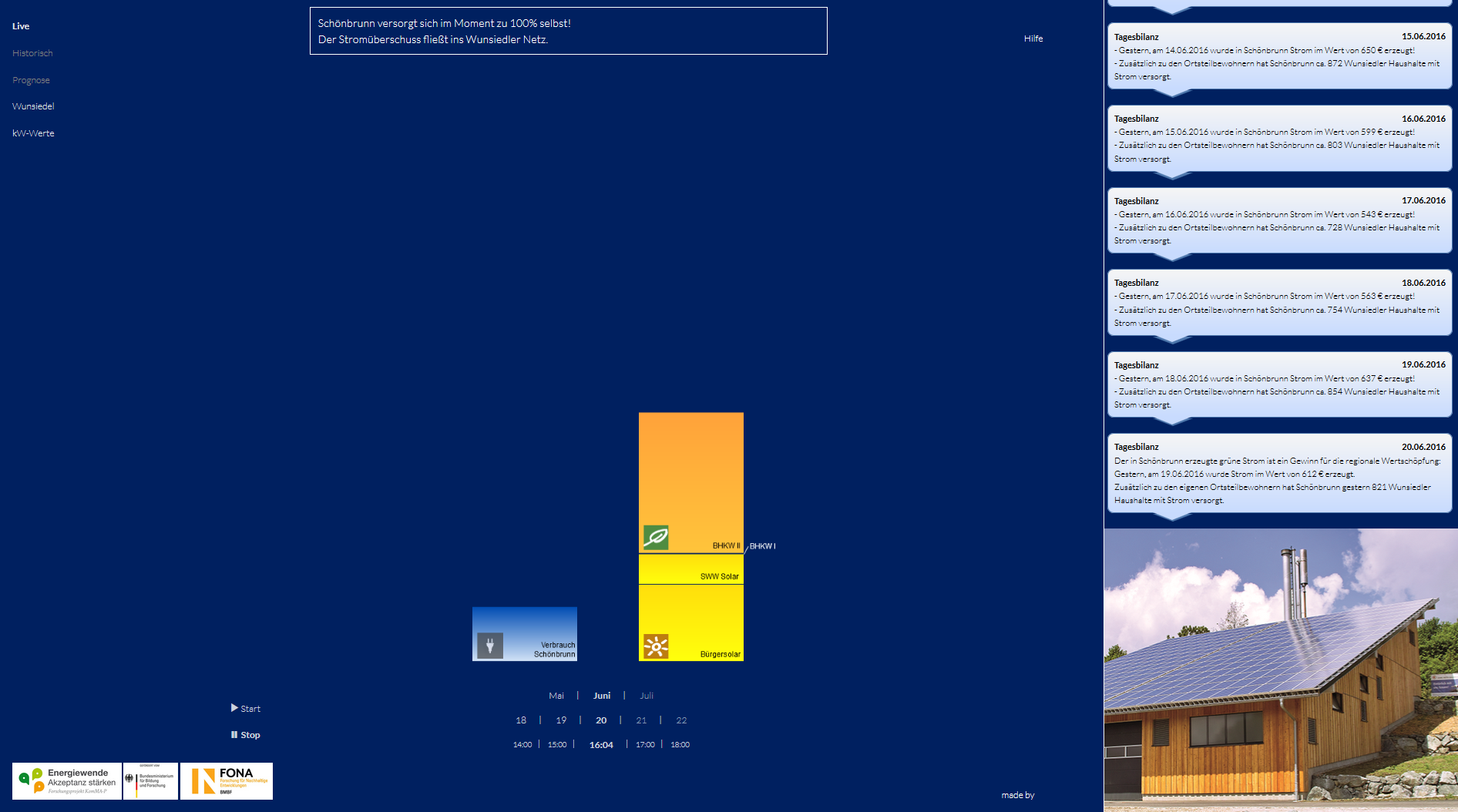| Duration: | July 2013 - June 2016 |
| Contracting Authority/ Sponsors: | German Federal Ministry of Education and Research (BMBF) |
| Project Partners: | Fraunhofer Institute for Systems and Innovation Research ISI, Center for Interdisciplinary Risk and Innovation Studies (ZIRIUS) at the University of Stuttgart, Chair for International Relations at the Insitute for Political Sciences of the Westfälische Wilhelms University in Münster |
| Website: | www.energiewende-akzeptanz.de |
KomMa-P – Complementary Usage of Different Energy Supply Concepts as a Motor for Social Acceptance and Individual Participation for the Transformation into a Robust Energy System

Many people in Germany welcome the energy transformation and the expansion of renewable energy. However, acceptance turns quickly into rejection in the case of specific actions in the immediate surroundings, such as the construction of wind turbines or power lines. “KomMA-P” researched the conditions, under which people are ready to accept and support the energy transformation. The central assumption was that possibilities must be offered for participation in this change in order to gain support. The objective of the “KomMA-P | Strengthening Acceptance of the Energy Transformation« project was to investigate the role of people-oriented and easily accessible participation offering in the energy transformation (which must not necessarily involve a monetary incentive) in more detail.
Fraunhofer ISE, SWW Wunsiedel GmbH and Energiewende GmbH tested a specific offering for participation in the energy transformation: energy flow visualization. Energy flow visualization is an Internet-based tool that visualized electricity flows using a simple graphical presentation. Using the tool, users can track around the clock, how much power is generated and consumed at what time in city district Schönbrunn of Wunsiedel. The energy flow visualization shows in detail, whether there is excess electricity generated in Schönbrunn that is distributed to other city districts in Wunsiedel, or whether Wunsiedel must externally procure additional electricity to ensure its own supply. The offered functions are assessed very positively. The activated click monitoring shows consistent calls since the visualization was switched online in February 2015.
Together with Fraunhofer ISI, Fraunhofer ISE also worked on adjusting the existing transformation scenarios to the findings of the participation and acceptance research of the project. In contrast to technical and cost-optimized energy transformation scenarios, the focus was on energy transformation models, people can identify with more strongly. Here, it was demonstrated that an increased decentral expansion strategy and increasing participation options (e.g., PV) as well as the introduction of compensation payments in the case of expansions result in manageable additional costs compared to a technically-economically optimum transformation.